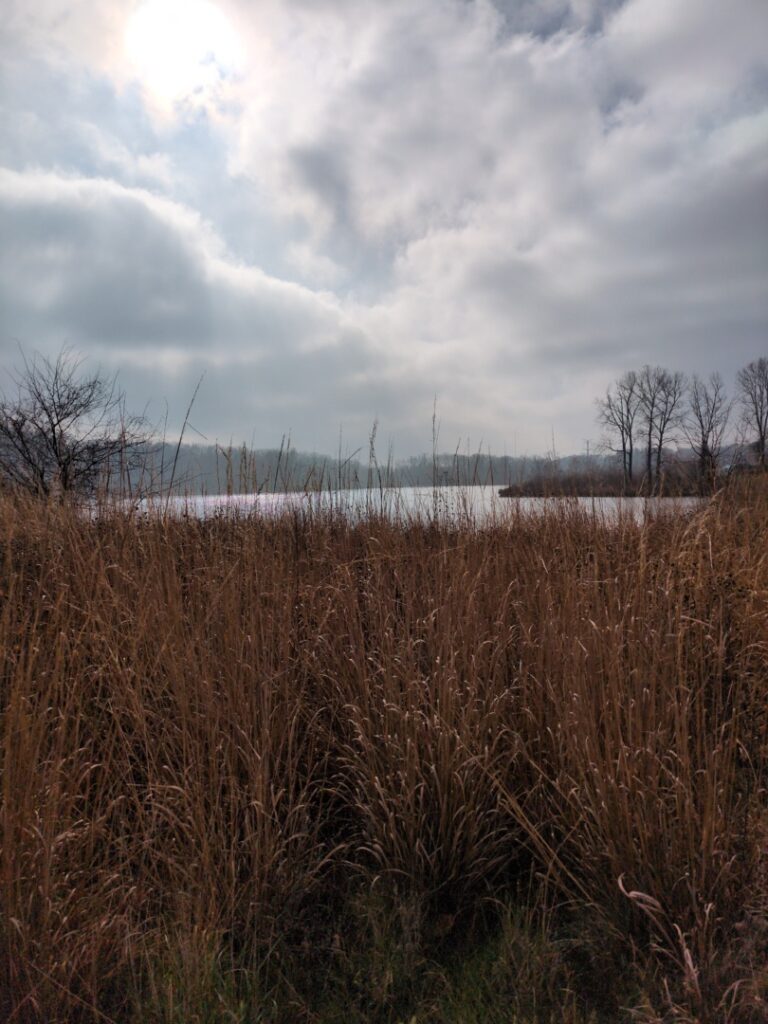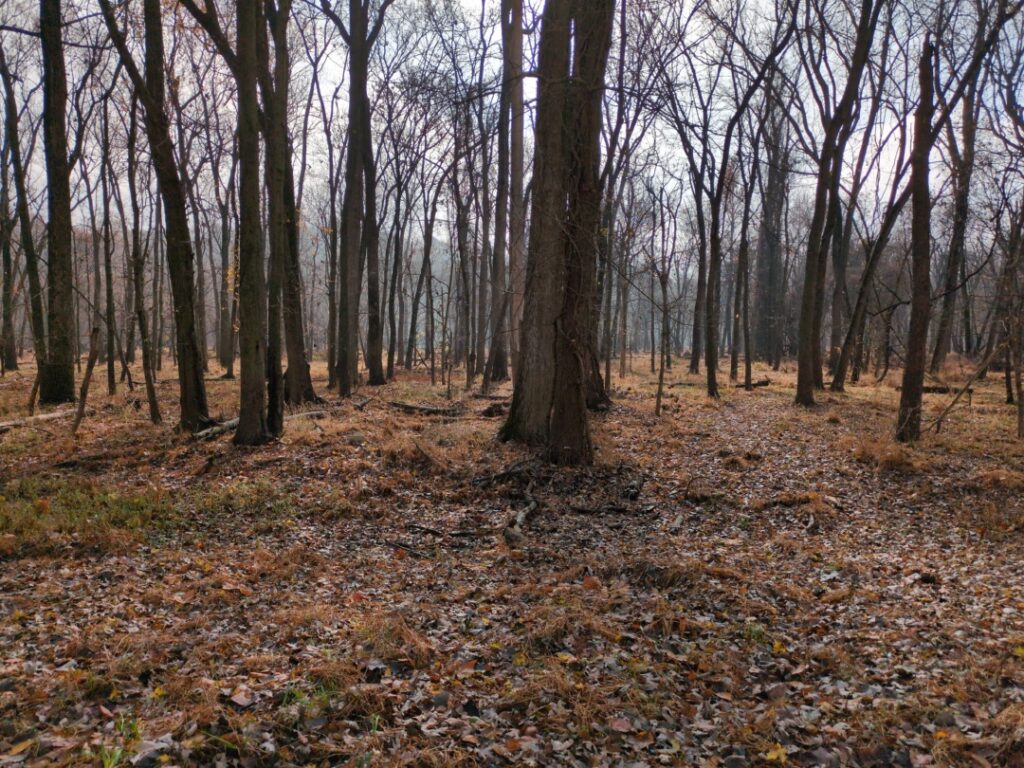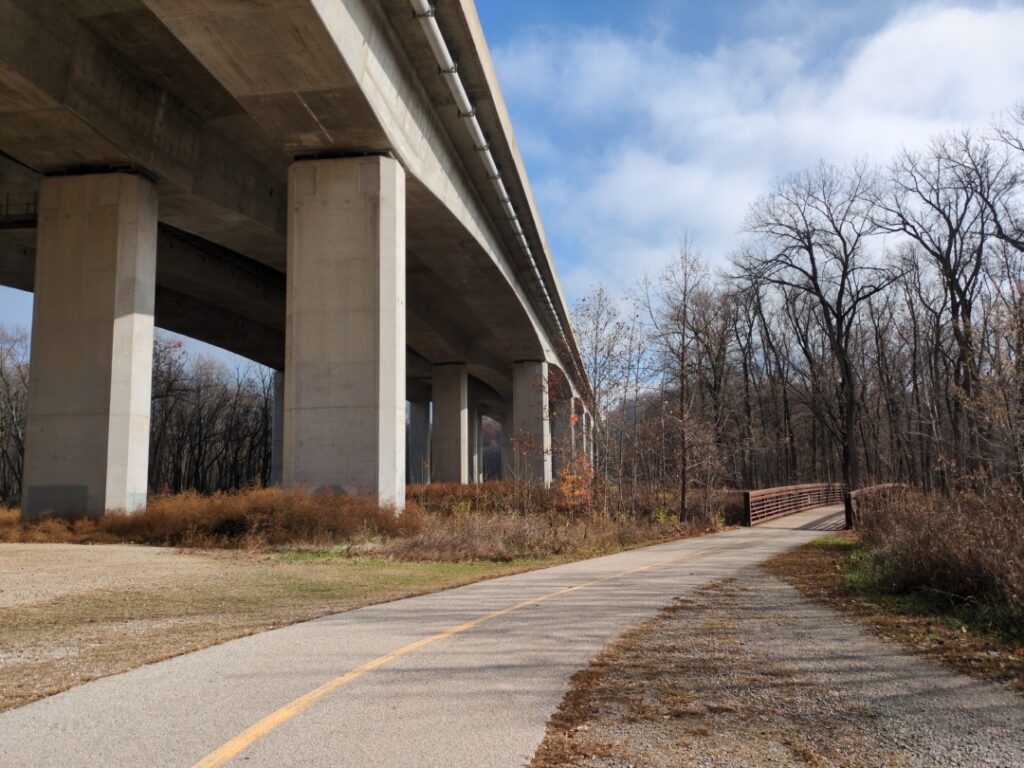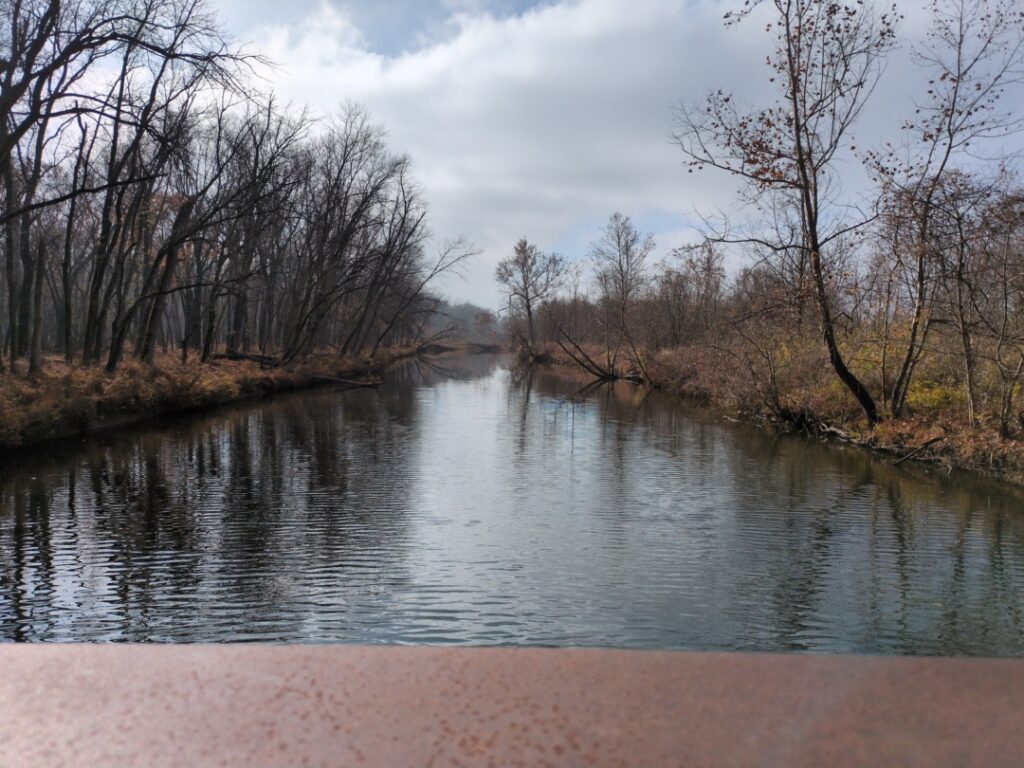Partially to help with the anxiety, and partially just because it’s good for me and I like doing it, and entirely because the weather has been much more suitable recently, I’ve been walking a bit more. My favorite, the Mallard Lake trail, as well as the local park which isn’t nearly as picturesque but is a much closer and more casual walk.
Here’s some photos from yesterday. It was 47 degrees, damp and windy, which I made it a bit more effort than the previous week (when it was mid-50s to low 60s and I almost didn’t work up a sweat on the 2.6 mile loop). I’ll still take it over 80+ degrees though.

I’m not a great photographer by any means, just a casual with a phone camera — this didn’t quite capture the light and mist like I’d hoped. This isn’t too far after my starting point, the Lakehouse Bar & Grill parking lot where walkers and bike riders often start.

This probably wasn’t the biggest leaf around, but still almost a foot across.

Every once in a while you’ll see deer in this area, but it’s slightly more likely in the unpaved “back half” which gets less human activity.

Big bridge (MO-364 aka Olive Blvd) and small bridge. This leg of the trail that runs parallel to the road is shared with the Creve Coeur Lake trail and tends to get more walkers/joggers/cyclists, but the colder weather kept it sparse today. Once you get to the embankment at the end of this section, that’s about the halfway point of the Mallard Lake Trail and a right turn takes you off the pavement to the less traveled gravel/dirt section. I doubled back yesterday because recent rains tend to make it muddy.

View from the small bridge.

Sometimes the entire wooded section looks a lot like this — things can get pretty swampy. But this is just a finger of the lake.
Yesterday I watched a video on the Lorre-Mill Double Knot V3, which explained and explored it very well. That got me almost wanting one, though for my purposes it’s a bit limited, more than a little expensive, I don’t really have room, and its patch points are not Eurorack compatible.
So instead I started thinking about shift registers. The DK has two simple 8-stage binary shift registers which it uses for rhythms and sequencing. Not Turing Machines, not runglers, not a Benjolin, not an LFSR, just a simple chain of bits, and a simple R2R (*) output for pitch/other modulation. You can patch your own loops, psuedo-random input using an audio source, or cross-patch them as desired. And this makes it a simple but cool, flexible tool, more so than I found the Turing Machine or Zorlon Cannon. Especially in the context of a full modular system, where I could use a matrix mixer to derive different CV patterns from those bits.
(R2R = a resistor ladder network, so named because it’s just a passive set of resistors that assign one bit a certain voltage, the next bit half that, the next half again, etc. This makes a simple asynchronous digital-to-analog converter, and is also how Nearness works to mix signals at different levels.)
There aren’t many simple, SIPO (serial-in-parallel-out) binary shift registers in Eurorack, but there are a few, and I started looking into them. I wound up fascinated by the Schlappi Engineering Nibbler. While it only has 4 stages/bits rather than 8, it’s not just a shift register but a binary counter, and you can set the register bit values directly. The shifting and setting can be synchronized with the counter clock or not. There’s a Carry output which can be used to reverse the counter, for symmetrical up-down patterns. There are two R2R outputs, one of which can have a phase offset. Like Xaoc’s Liebniz series, it’s pretty abstract but there are a lot of possibilities — both for rhythm/modulation patterns, and for audio.
I decided to go for Nibbler, setting my Planar aside because I really haven’t been using it. I could also pick up a Holocene Electronics SIPO, a small 8-bit shift register, but we’ll see how I do without it — and maybe use Bitwig Grid patches if I want a second SR, although that involves latency and being careful about clock rate. I think Nibbler will interact in all kinds of fun ways with my other stuff without a second shift register, particularly since MD2’s sequences can be modified with trigger inputs. That means I get to keep my Gliss around, and try to take more advantage of its fun, instant gestures to create modulation loops.
